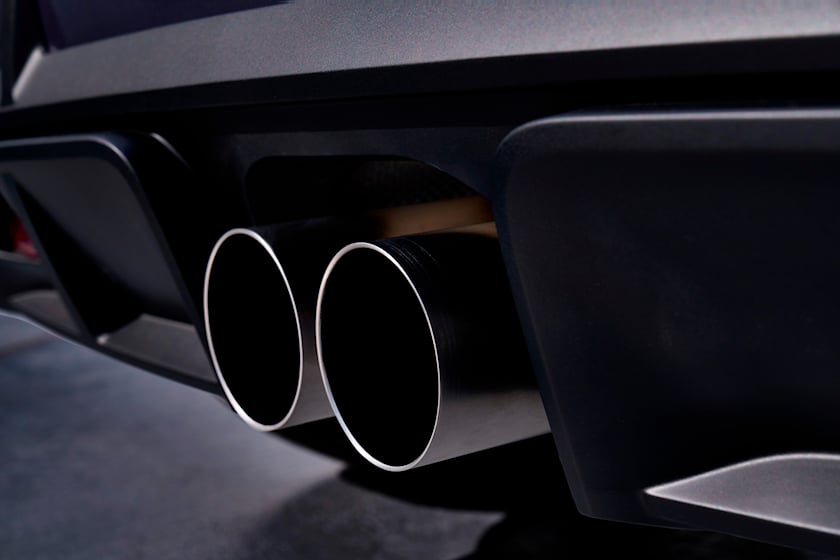Understanding all-wheel and rear-wheel steering
First popularized in the '80s, cars with 4-wheel steering (4WS) or all-wheel steering (AWS) are now relatively common. The Nissan 240SX used 4WS in the '90s and the Skyline in the '80s already. GM used Quadrasteer 4WS on some SUVs and trucks in the early 2000s. But what is all-wheel steering and how does 4-wheel steering work?
An active automotive four-wheel steering system is a mechanical rear-axle steering system that turns the rear wheels within defined limits in addition to the front-wheel steering that all cars already have. Cars that have steerable rear wheels are able to turn their rear wheels in either the opposite or the same direction as their front wheels.
Brands such as Porsche and Volkswagen have been using rear suspension geometries that provide a small measure of passive rear-wheel steering under high cornering forces, without the addition of any extra parts, for decades to aid stability when going around a corner. Modern systems are not autonomous, and only respond when the driver turns the steering wheel - to learn how truly autonomous systems work, read more here.
Car manufacturers fit four-wheel steering for various reasons. At high speeds, the rear wheels normally turn in the same direction as the front wheels whereas, at low speeds, they would turn in the opposite direction. These drive-by-wire systems usually have no physical linkage between the steering wheel and rear wheels, unlike earlier mechanical systems. A central processing unit controls the system and decides what type and amount of steering input to apply to the rear axle based on the feedback of numerous sensors.
Here are some advantages of 4WS. However, as always, there are a few disadvantages, too:
Since all cars' front wheels are steered, a car with all-wheel steering is often referred to as a rear-wheel steering car because adding the four-wheel steering system enables the rear wheels to turn from side to side too, but this is not strictly correct. So what is rear-wheel steering actually? It refers to a vehicle that has fixed front wheels and is steered by the rear wheels only, such as a forklift truck. Adding rear-wheel steering to a front-steering car turns the steering into a 4-wheel steering system, with all wheels turning from side to side. However, since it's a given that the front wheels are steered in normal road cars, 4-wheel/rear-wheel steering now both mean the same thing in that context.
Current cars with rear-wheel/all-wheel steering on the US market include:
Four-wheel steering is used mostly to improve the handling of the best sports cars and the maneuverability of the biggest car, SUV, and truck models. It is a great way to aid the handling of large and heavy cars and SUVs and make them appear more nimble and agile than they would otherwise be. It is usually found on more expensive vehicles and not regarded to be worth the complexity, weight, and extra cost on small or cheap cars. It is unlikely to be worth it to the average motorist unless you are going to make full use of the extra maneuverability it brings or you want that final dimension of handling dynamics from your supercar. It is invaluable in off-road vehicles such as the Hummer EV, though, where it confers genuine off-road advantages.
Most manufacturers don't offer 4WS as a standalone option and it's often either standard on specific models or added as part of a package of extras on other cars. However, on the Audi Q7 SUV, the all-wheel steering option is available by itself in the USA and is charged at $1,500, giving a fair indication of how much this type of technology adds to a car's MSRP.
Technically, Mazda first showed AWS for normal cars in its 1984 MX-02 concept car, but the technology only reached Mazda road cars in 1988. Nissan debuted its HICAS AWS system on the 1986 Nissan Skyline GTS models and Honda followed in 1987 with the Prelude. While AWS was available earlier in other domains, these three Japanese automakers are credited with popularizing it for mass production on normal cars.
Modern systems with full electronic control and no mechanical linkages to the steering wheel don't add much weight to a car. The ZF Active Kinematics Control kit used in the Lamborghini Aventador S only adds around 13.2 pounds to the weight of the car. It is deemed more than worth the penalty for the improved agility that makes the car feel lighter.
The first HICAS 4WS system used by the 1986 Nissan Skyline turned the rear tires by only around half a degree. Other systems such as GM's Quadrasteer allowed for a maximum of 15 degrees but limited it to 12 degrees in trailer-towing mode. Modern systems often vary between three and five degrees, but the latest Mercedes-Benz S-Class moves the rear wheels to an angle of up to ten degrees.



